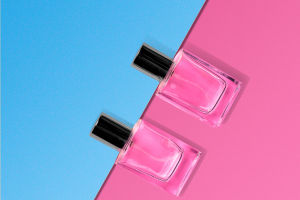Glasses are a common item in our daily lives, and most people have a basic understanding of them. However, the functions and types of glasses are more diverse and complex than one might think.
Glasses are not only used to correct vision problems but also play an important role in protecting eye health, improving visual effects, and even as a fashion accessory. This article will provide a scientific overview of the history, functions, and types of glasses.
Brief History
The origin of glasses can be traced back to 13th-century Italy. The earliest glasses are believed to have been invented around the year 1270.
These early glasses consisted of two convex lenses and a simple frame, primarily used to assist the elderly in reading. Before the invention of glasses, people generally relied on magnifying glasses or other simple optical tools to enlarge text and objects.
Over time, the design and materials of glasses have continuously improved. By the 15th century, glasses began to spread across Europe, with different lens materials and frame designs emerging. By the 17th century, glasses for farsightedness and nearsightedness became differentiated, specifically designed to correct different vision problems.
In the 20th century, with the development of modern optical technology, glass design became more diverse, and new methods of vision correction, such as contact lenses and laser surgery, began to appear. However, glasses remain the most common tool for vision correction.
Basic Functions
The primary function of glasses is to correct vision problems, including nearsightedness, farsightedness, astigmatism, and presbyopia. Through different types of lenses, glasses adjust the light entering the eyes, allowing it to focus correctly on the retina, thereby improving vision.
1. Correcting Nearsightedness: Nearsightedness occurs when the eyeball is too long or the cornea is too curved, causing light to focus in front of the retina, and making distant objects appear blurry. Concave lenses in nearsighted glasses can disperse light, allowing it to focus accurately on the retina.
2. Correcting Farsightedness: Farsightedness occurs when the eyeball is too short or the cornea is not curved enough, causing light to focus behind the retina, and making nearby objects appear blurry. Convex lenses in farsighted glasses can converge light, helping it form a clear image on the retina.
3. Correcting Astigmatism: Astigmatism is caused by an irregular curvature of the cornea or lens, preventing light from focusing on a single point on the retina. Glasses for astigmatism usually use cylindrical lenses to adjust the light in different directions to achieve correction.
4. Correcting Presbyopia: Presbyopia is an age-related condition where the lens loses its elasticity, making it difficult to focus on nearby objects. Glasses for presbyopia use convex lenses to help the eyes focus better on close objects.
Types of Glasses
Based on different purposes and designs, glasses can be classified into several types. Here are some common types of glasses:
1. Single Vision Glasses: These glasses have lenses with a single focal point, typically used to correct nearsightedness, farsightedness, or astigmatism. They are the most common type of glasses.
2. Bifocal Glasses: Bifocal lenses contain two different focal lengths in a single lens, usually with the upper part for farsightedness and the lower part for nearsightedness or presbyopia. This design is suitable for people who need to correct both farsightedness and presbyopia.
3. Progressive Multifocal Glasses: Progressive lenses have no obvious dividing line, and the lens gradually changes in focal length from top to bottom, allowing correction of farsightedness, nearsightedness, and presbyopia simultaneously, providing a more natural visual experience.
4. Blue Light Blocking Glasses: With the widespread use of electronic devices, blue light blocking glasses have emerged. These glasses can filter out some blue light and may help reduce eye strain caused by prolonged use of digital screens.
5. Sunglasses: The main function of sunglasses is to protect the eyes from UV rays while reducing glare. Modern sunglasses not only offer UV protection but also often incorporate polarized lenses to reduce glare and improve visual comfort.
6. Sports Glasses: Designed specifically for sports, these glasses usually have better impact resistance and fit, protecting the eyes from external harm such as UV rays, wind, sand, or collisions during sports.
7. Contact Lenses: Although not traditional "glasses," contact lenses are a choice for many people. They sit directly on the cornea, providing vision correction without affecting appearance.
Conclusion
Glasses are an effective tool for correcting vision problems and play a crucial role in daily life.
With technological advancements, the variety and functions of glasses have continuously expanded to meet the diverse needs of people. Whether for vision correction, eye protection or as a fashion accessory, choosing the right glasses is crucial.


